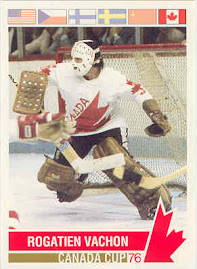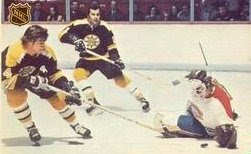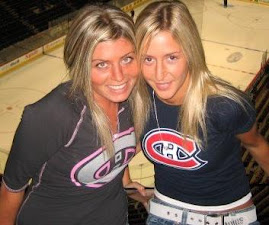
The NHL began its second season with the three franchises who survived the hard times of the 1917-18 campaign: The Montreal Canadiens, the Ottawa Senators and the Toronto Arenas.
The new season would become another turbulent trial for the Canadiens and the NHL, and this one would end like quite no other. Three separate tragedies would befall the Canadiens in this season, and the first bad omen came just a month after the end of 1918 playoffs.

Defenseman Jack Laviolette, an automobile racer in the offseason, lost his right foot in a car accident on May 1. Though he was not racing at the time, Laviolette lost control of the vehicle he was driving and hit a steel post, jamming his foot between the brake pedal and a section of steel frame. Several times during the season the Canadiens held fundraisers for their former star, and they kept him in their employ for a short time thereafter.

Montreal returned a large core of its team from the previous year as only Evariste Payer did not make it back. The new additions were Odie Cleghorn and Fred Doherty. Amos Arbour returned after a brief time in the service during which he suited up with the 228th Battalion. Arbour had played a key role in the Canadiens 1916 Stanley Cup. Doherty had been a part time player with the Wanderers and Bulldogs and returned from the war to play but a single game in this season with Montreal.

Cleghorn, a former goal per game forward with the Wanderers for six seasons, was the big addition to the Canadiens. The younger brother of the Senators Sprague Cleghorn, Odie would spent seven seasons in a Canadiens uniform and was joined in Montreal by his sibling in 1921. He would match Newsy Lalonde goal for goal in this campaign and finish second behind him in points.
 Lalonde regained his status as the team's top player when leading goal scorer Joe Malone announced to the Canadiens organization that he'd found employment in Quebec City and would become available only on weekend home dates for the team. Lalonde liked to have the onus placed upon him, as well as the icetime that came with it, and Malone's decision opened room for him to reassume his status while continuing on as the team's coach as well. A happy Newsy usually meant a more productive player for the Canadiens. Malone informed Montreal that he would suit up for all playoff games, but was later unable to fullfill that committment. He would be missed when he would have been counted on most come that time.
Lalonde regained his status as the team's top player when leading goal scorer Joe Malone announced to the Canadiens organization that he'd found employment in Quebec City and would become available only on weekend home dates for the team. Lalonde liked to have the onus placed upon him, as well as the icetime that came with it, and Malone's decision opened room for him to reassume his status while continuing on as the team's coach as well. A happy Newsy usually meant a more productive player for the Canadiens. Malone informed Montreal that he would suit up for all playoff games, but was later unable to fullfill that committment. He would be missed when he would have been counted on most come that time.
The season was again split into two ten games halves and the all too familiar scenario played out once more for the Canadiens. They would post a 7-3 record, assuring them of a playoff round against the second half's winner should they not take that title as well. The Ottawa Senators, as per their norm, came on strong at season's end and clinched the second half early as the Canadiens ended with a 3-5 record.
 The final two games of the season were trimmed from the schedule when the Toronto franchise faltered. The Arenas, who had won the Stanley Cup the previous season, were in dire straights on many fronts. With the team playing badly, attendance sagging, and players breaking training, team owner Hubert Vearncombe alerted the league that he was ceasing activities for the time being. The NHL president Frank Calder asked the team to play its eighteenth game to even the schedule out.
The final two games of the season were trimmed from the schedule when the Toronto franchise faltered. The Arenas, who had won the Stanley Cup the previous season, were in dire straights on many fronts. With the team playing badly, attendance sagging, and players breaking training, team owner Hubert Vearncombe alerted the league that he was ceasing activities for the time being. The NHL president Frank Calder asked the team to play its eighteenth game to even the schedule out. With the NHL down to two teams - not coincidently its two halves winners - a best of seven series was set to decide the league champion for 1919. The Canadiens, without Malone, would defeat the Senators four games to one. Ottawa, deprived of leading scorer Frank Nighbor for a family bereavement, were no match for Montreal.
With the NHL down to two teams - not coincidently its two halves winners - a best of seven series was set to decide the league champion for 1919. The Canadiens, without Malone, would defeat the Senators four games to one. Ottawa, deprived of leading scorer Frank Nighbor for a family bereavement, were no match for Montreal.
Newsy Lalonde was a one man wrecking crew on a mission. He tallied 11 times in the five games against Ottawa, and the Canadiens confidently headed west to face the Seattle Metropolitans in a rematch from two seasons prior.

A long trip and a stayover in Victoria would prove to have disastrous consequences for the Canadiens Stanley Cup hopes.
The Canadiens got off on the wrong foot in game one, suffering a humiliating 7-0 defeat to the PCHA champions. Three days later, on March 22, Lalonde took care of things in a record setting way by scoring all four of his teams goals in a 4-2 win that knotted the series.

The Metropolitans bounced back on the 24th, pounding Montreal again by a 7-2 score. The contest of March 26 was a hard fought battle that produced no winner. A scoreless tie, undecided after a full additional period of overtime, was a showcase for goaltenders Harry Holmes and Georges Vezina - perhaps the two best goalies of this era.
 Game 5 also produced overtime on March 30, with Jack McDonald of the Canadiens notching the winner at 15:57 of the extra period. The series stood deadlocked at 2-2-1, and it would remain that way.
Game 5 also produced overtime on March 30, with Jack McDonald of the Canadiens notching the winner at 15:57 of the extra period. The series stood deadlocked at 2-2-1, and it would remain that way. The Spanish influenza virus that was ravaging the world tragically had hit the west coast. Several of the Victoria Cougars players had fallen seriously ill when the Canadiens had stopped over in that city prior to moving on to Seattle, and it has long been assumed that that is where the Montreal players came in contact with the deadly virus.

Canadiens manager George Kendall Kennedy was aware of the virus, and had taken out insurance on his players before setting off for the west. When many of the team's elements fell ill, the series was cancelled.

On April 1, the scheduled date of the sixth game, a definite and final announcement as to the fate of the series was made by the Seattle arena management at 2:30 p.m. that there will be no more games played. At noon that day, workmen started tearing up the arena ice floor, preparatory to converting the building into a roller skating rink.

The fact that the ice was being taken up settled all arguments as to whether or not the series would be continued if the visitors were able later to put enough men on the ice.
A newspaper writeup at the time had this to say:

Lalonde, Berlinguette, Couture and Kennedy are reported only slightly ill. Last night the remaining four men came down, leaving only Pitre, Cleghorn and Vezina, who are not afflicted. It is believed here the Canadiens contracted the disease in Victoria, where the players of that team are just recovering from influenza, seven of them having been in bed at one time.
Not in the history of the Stanley Cup series has the worlds hockey championship been so beset with hard luck as has this one. Of the 19 players engaged in it, hardly one of them has gone through without some bad luck. The Seattle team has been badly battered, Rowe, Foyston, Wilson, Murray and Walker all having had injuries. Corbeau, the great Canadien defenseman, was hurt in the very first game and has not been able to do more than substitute since.

The great overtime games of the series have taxed the vitality of the players to such an extent that they are in poor shape indeed to fight off such a disease as influenza. However, the Canadiens are being given the very best of care, nurses and physicians being in attendance at all times on them and every other attention is being shown the stricken players.
The Canadiens Odie Cleghorn was the only player who was not afflicted. Joe Hall, known as the baddest and oldest player of the time died in Seattle's Columbus sanatorium on April 5, four days after authorities had called off the series.

The Montreal players headed home after the sixth game was cancelled with the exception of Couture, Berlinguette and longtime Hall rival Lalonde, who travelled to Brandon, Manitoba to act as pallbearers for their fallen comrade.
Some might find it odd that Lalonde would be along for his hated rival's last moments, but the two had long settled their differences, had become good friends, and were even roomates during road games.
Manager Kennedy also fell gravely ill, and passed away two years later from the effects of the virus.


Once back in Montreal, the Canadiens players were just regaining their health when the Jubilee Arena burned to the ground.
It would be a difficult season to forget.

The tragedies suffered were only part of the tale. The Canadiens had been build into a solid squad and had appeared in three of the last four Stanley Cup finals. With some better fortune, they may have won a second Cup. The Canadiens were by far the most popular hockey team in Montreal, and things could only get better.
 On the league front, several changes brought in at the start of the season had enhanced the quality of the spectacle. Two blue lines were added to the ice, painted twenty feet each from center, creating three playing zones. Forward passing and kicking the puck were permitted in the middle neutral zone. Penalties now had to be served in full. For minor fouls, substitutes were not allowed until the penalized player had served three minutes. For major fouls, no substitutes were allowed for five minutes. For match fouls, no substitutes were allowed for the remainder of the game. Both new wrinkles added up to a very freewheeling game.
On the league front, several changes brought in at the start of the season had enhanced the quality of the spectacle. Two blue lines were added to the ice, painted twenty feet each from center, creating three playing zones. Forward passing and kicking the puck were permitted in the middle neutral zone. Penalties now had to be served in full. For minor fouls, substitutes were not allowed until the penalized player had served three minutes. For major fouls, no substitutes were allowed for five minutes. For match fouls, no substitutes were allowed for the remainder of the game. Both new wrinkles added up to a very freewheeling game.With the war reaching an end and the Quebec Bulldogs ready to make a return, things were looking up for the NHL. The issue of a solid Toronto franchise would soon be settled as well.

Some notes on the photos in this post: You will have noticed that several of the shots of Canadiens players feature the same background. There has long been confusion over which year the pictures were taken - 1917 or 1919? The source of the confusion lies in that these pictures were taken in Seattle, where the Canadiens competed for the Stanley in both those seasons. There are also photos of the Seattle Metropolitans players taken in this same area, which leads one to believe they may have been taken outside an arena door prior to a match. The photos are most definitely from 1919, as Canadiens Joe Hall, Odie Cleghorn, and Jack McDonald were not with the club in 1917. Oddly, a long circulated poster of the 1917 Metropolitans Stanley Cup team features the shots taken in 1919.
Several of the 1919 photos are incorrectly attributed as being the wrong player. The photo of Billy Coutu is often erroneously listed as Louis Berlinguette. They can be told apart by Coutu's thinner hair, and Berliguette's particular from, when compared to other photos. In these pictures, Berlinguette is leaning on his stick. Photos of Joe Hall and Newsy Lalonde are often mixed up as well - likely because their hair is parted in the same manner. Hall is the player with the outstretched stick.
In all these photos, it is not hard to tell that the Canadiens were wearing white hockey pants!
The photo of Billy Bell may have been taken anytime between 1919 and 1923, when the Canadiens ceased wearing the white pants.
The photos of the children in Canadiens sweaters was taken about this time - somewhere between 1918 and 1922. It is featured in this post primarily because it is from the era, but there is also an additional reason for its inclusion. According to the book "Kings Of The Ice" from which the photo was taken, the short player posing directly to the right of the kid holding the "Joliette" sign is Jack Adams. "Jolly" Jack, a man who would later develope an unbridled hatred of the Canadiens while running the Detroit Red Wings, is the only man to have his name on the Stanley Cup as player, general manager, and coach. It is highly doubtful that the photo is actually Adams, as he was a member of the 1918 Toronto Arena Cup champions.
There is no featured photo of Joe Malone, as he did not accompany the Canadiens out west this season. Most known photos of Malone in a Canadiens sweater are from the early 1920's, when his start had greatly faded.
The cartoon of the man behind the wheel of an automobile from the time is actually Jack Laviolette.
Years after his retirement from hockey, Odie Cleghorn would be found dead in his bed just hours before his brother Sprague's funeral on July 13, 1956. Odie and Sprague were very close, "like twins" according to Canadiens coach Leo Dandurand. It's often been said that the stress of the loss of Sprague may have been the main factor contributing to his heart failure.
.






























































































































































No comments:
Post a Comment